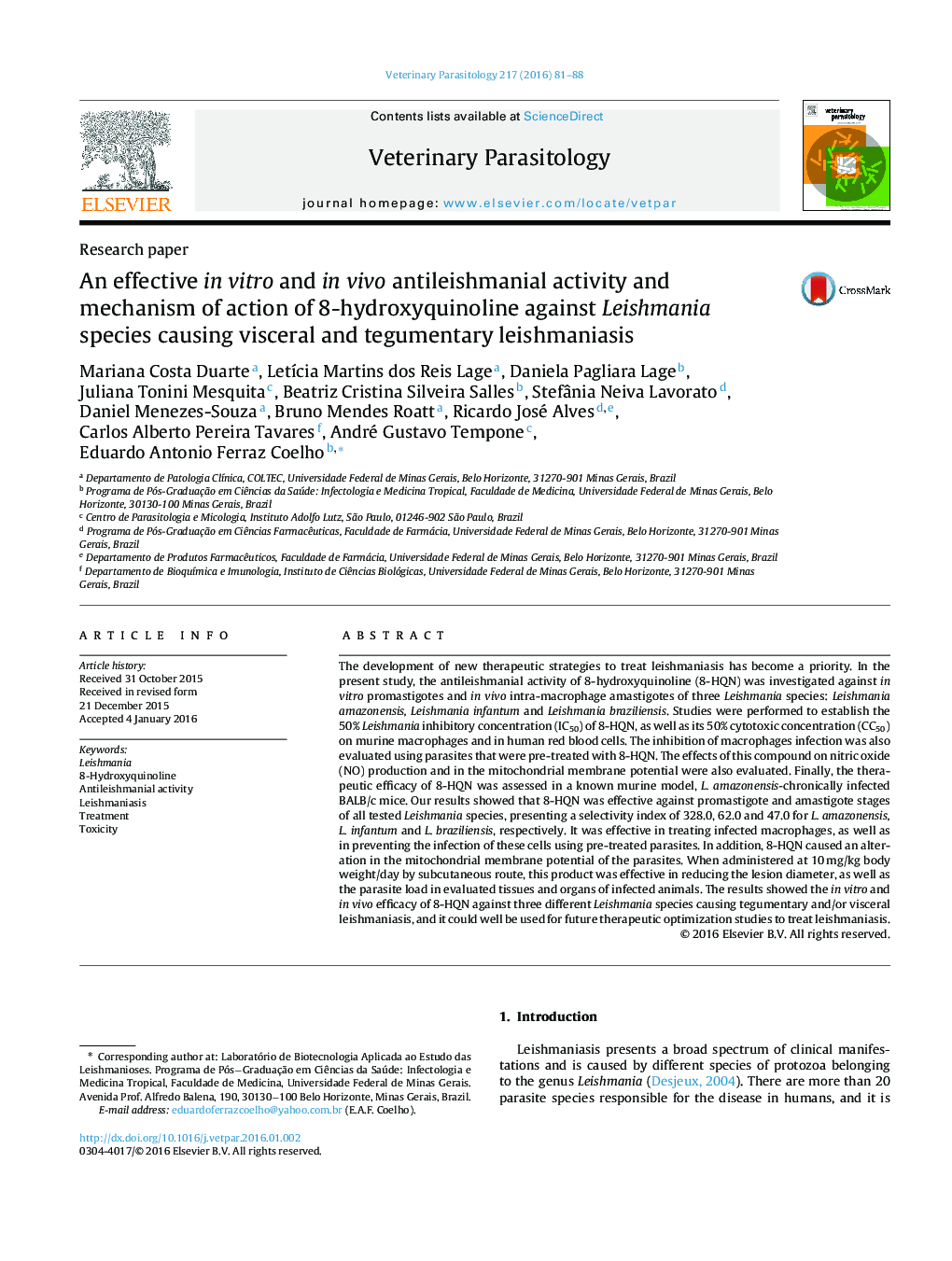| کد مقاله | کد نشریه | سال انتشار | مقاله انگلیسی | نسخه تمام متن |
|---|---|---|---|---|
| 2469937 | 1555659 | 2016 | 8 صفحه PDF | دانلود رایگان |

• New therapeutic strategies to treat leishmaniasis.
• 8-HQN was tested against promastigotes and amastigotes of three Leishmania species.
• It presented better in vitro results in comparison to amphotericin B.
• 8-HQN causes alterations in the Leishmania mitochondrial membrane potential.
• It was able to reduce the lesion diameter and parasite load in BALB/c mice.
The development of new therapeutic strategies to treat leishmaniasis has become a priority. In the present study, the antileishmanial activity of 8-hydroxyquinoline (8-HQN) was investigated against in vitro promastigotes and in vivo intra-macrophage amastigotes of three Leishmania species: Leishmania amazonensis, Leishmania infantum and Leishmania braziliensis. Studies were performed to establish the 50% Leishmania inhibitory concentration (IC50) of 8-HQN, as well as its 50% cytotoxic concentration (CC50) on murine macrophages and in human red blood cells. The inhibition of macrophages infection was also evaluated using parasites that were pre-treated with 8-HQN. The effects of this compound on nitric oxide (NO) production and in the mitochondrial membrane potential were also evaluated. Finally, the therapeutic efficacy of 8-HQN was assessed in a known murine model, L. amazonensis-chronically infected BALB/c mice. Our results showed that 8-HQN was effective against promastigote and amastigote stages of all tested Leishmania species, presenting a selectivity index of 328.0, 62.0 and 47.0 for L. amazonensis, L. infantum and L. braziliensis, respectively. It was effective in treating infected macrophages, as well as in preventing the infection of these cells using pre-treated parasites. In addition, 8-HQN caused an alteration in the mitochondrial membrane potential of the parasites. When administered at 10 mg/kg body weight/day by subcutaneous route, this product was effective in reducing the lesion diameter, as well as the parasite load in evaluated tissues and organs of infected animals. The results showed the in vitro and in vivo efficacy of 8-HQN against three different Leishmania species causing tegumentary and/or visceral leishmaniasis, and it could well be used for future therapeutic optimization studies to treat leishmaniasis.
Figure optionsDownload as PowerPoint slide
Journal: Veterinary Parasitology - Volume 217, 15 February 2016, Pages 81–88